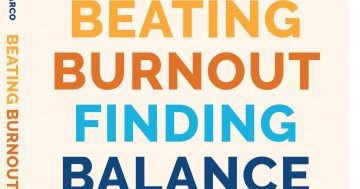Cassie Sellars* has advice on burnout — how to recognise it in yourself and others, and what to do about it.
 I’ve been posting a bit of content recently and it seems that the most popular posts are about burnout.
I’ve been posting a bit of content recently and it seems that the most popular posts are about burnout.
So if everyone is interested in reading about burnout I thought I might give them a little more insight in how to detect the symptoms early and how to prevent it happening.
It is easy to miss the signs until they are already there.
Burnout can affect anyone and is increasingly used to describe a common set of symptoms facing everyone from employees to leaders.
You need to ask yourselves some questions.
Have you become cynical or critical at work? Do you drag yourself to work and have trouble getting started?
Have you become irritable or impatient with co-workers, customers or clients? Do you lack the energy to be consistently productive?
Do you find it hard to concentrate? Do you lack satisfaction from your achievements?
Do you feel disillusioned about your job?
Are you using food, drugs or alcohol to feel better or to simply not feel? Have your sleep habits changed?
Are you troubled by unexplained headaches, stomach or bowel problems, or other physical complaints?
If you answered yes to any of these questions, you might be experiencing job burnout.
The long-term consequences of overdoing it can be damaging to work, careers, and relationships.
Sadly, we often focus on stories of entrepreneurs in the early building days, without looking more closely at the downstream consequences.
Many entrepreneurs face burnout years later, long after any media mayhem has died down.
Unless you have a solid support system in place, just trying to push through can negatively impact your relationships, your work, and your overall wellbeing.
The biggest problem I see in how we address stress and resilience is a lack of diversity of options.
It’s easy to get into a rut: Go to the bar, let off steam with a drink or two, stay up late and watch television to zone out, and repeat.
Perhaps your ‘tool’ of choice is exercise. What happens if you sprain an ankle?
Having only one strategy for staying emotionally resilient can put you in a pickle if it is no longer available.
Here are some strategies to fight job burnout.
Awareness:
Knowing you are experiencing job burnout is an essential first step.
Try to get more sleep:
Getting too little sleep is a likely contributor to job burnout.
Sleeping better is also an important sign that you’re recovering from burnout and ready to go back to work.
Do cardiovascular exercise regularly:
Cardiovascular exercise has been shown in studies to significantly reduce burnout symptoms in as little as four weeks.
Practice yoga:
Yoga programs are helping school teachers, nurses, medical students, and first responders prevent and fight burnout.
Studies show that it can significantly reduce emotional exhaustion.
Mindfulness meditation:
This is a technique that allows you to just be exactly where you are and observe without judgment.
You can do mindfulness meditation through free audio-guided meditations online or apps like Headspace.
Practice for as little as 10 minutes a day. Observe your thoughts without judgment, and let them come and go like passing waves in the ocean.
Practice mindful breathing:
Meditation can sometimes sound intimidating or challenging.
It does not have to be physically uncomfortable. You don’t need to force your mind to go blank.
Inhale for four counts of breath, and exhale for four counts.
Say to yourself with each breath: “Breathing in, I calm my whole body. Breathing out, I calm my whole body.”
Mindful walking:
Pair your steps with your breath.
Inhale for four steps, exhale for four steps.
Adjust the number of steps based on your pace of walking to create an even, calming breath pattern.
Make time for self-care and self-compassion:
This is different for everyone and what you feel is right can change day-to-day.
Massage therapy has been shown to reduce stress and anxiety and levels of the stress hormone cortisol.
Experiment to find what nourishes you.
It sounds really simple, but you’d be surprised how hard it is to give ourselves ‘permission’ to treat ourselves well.
Talk about your situation with people you trust:
Talking with a trusted supervisor or mentor can be helpful.
If things are not improving, you can treat burnout symptoms with the help of a mental health professional.
Never say: ‘I don’t have enough time:
The most common reaction to the strategies listed above is that people already feel like they don’t have enough time.
The paradox is that making time for yoga, meditation, additional sleep or exercise will actually give you more time.
They improve focus, concentration, and energy, so you will be able to complete tasks more effectively and efficiently.
Yoga and mindfulness activities help us learn how to slow down and become fully aware of each moment.
Doing restorative activities regularly puts the brake on your fight-or-flight response, so you will feel less rushed and stressed.
* Cassie Sellars is a Brisbane-based personal trainer who offers fresh perspectives on issues of concern. She can be contacted at linkedin.com.
This article first appeared on LinkedIn.











